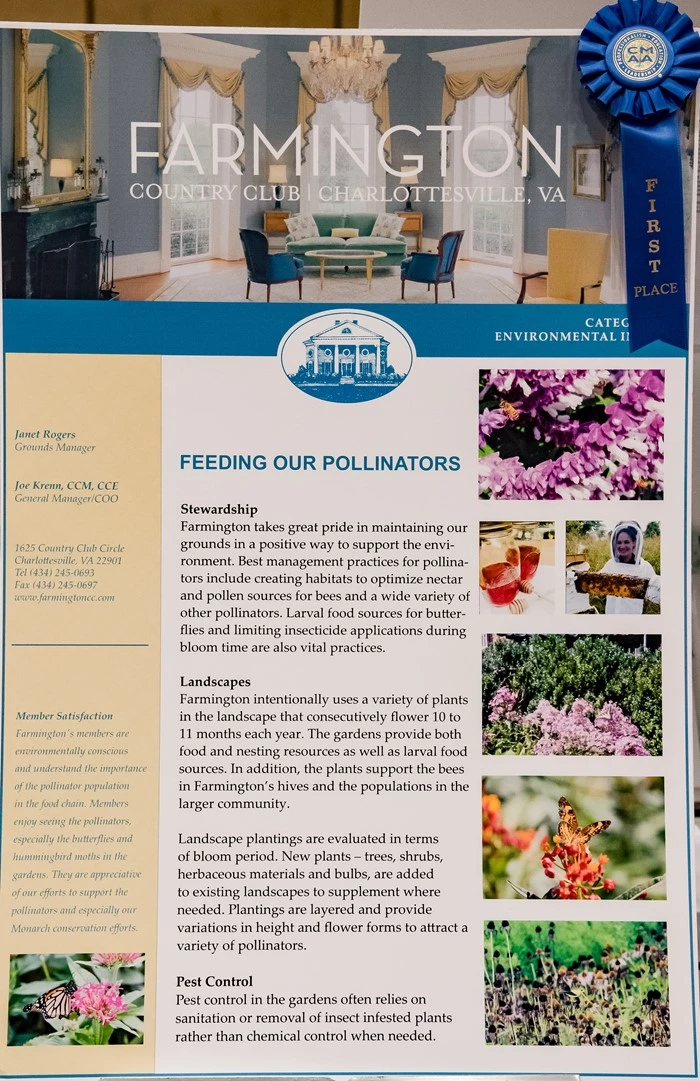Idea Fair
Feeding Our Pollinators
Winner
How has this idea enhanced your club's operation, etc.?
Farmington takes great pride in maintaining our grounds in a positive way to support the environment. Best management practices for pollinators include creating habitats to optimize nectar and pollen sources for bees and a wide variety of other pollinators. Larval food sources for butterflies and limiting insecticide applications during bloom time are also vital practices.
How was this idea implemented, and what have been the club members' reactions?
Farmington intentionally uses a variety of plants in the landscape that consecutively flower 10 to 11 months each year. The gardens provide both food and nesting resources as well as larval food sources. In addition, the plants support the bees in Farmington’s hives and the populations in the larger community.
Landscape plantings are evaluated in terms of bloom period. New plants – trees, shrubs, herbaceous materials and bulbs, are added to existing landscapes to supplement where needed. Plantings are layered and provide variations in height and flower forms to attract a variety of pollinators.
Farmington's members are environmentally conscious and understand the importance of the pollinator population in the food chain. Members enjoy seeing the pollinators, especially the butterflies and hummingbird moths in the gardens. They are appreciative of our efforts to support the pollinators and especially our Monarch conservation efforts.


About the author
Joe Krenn